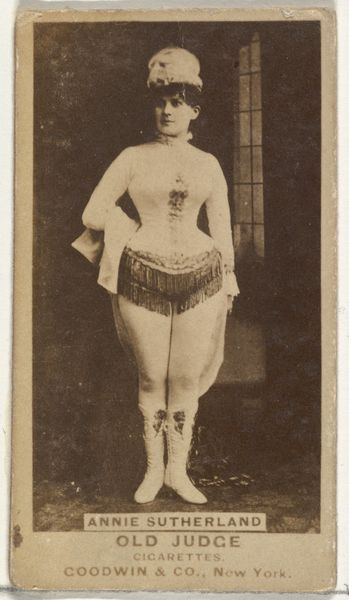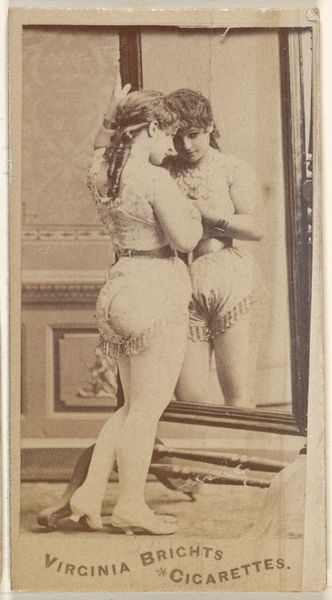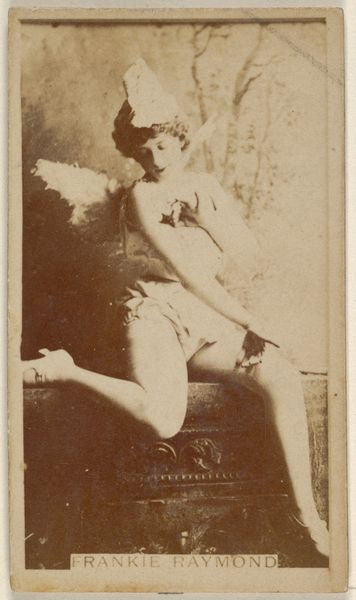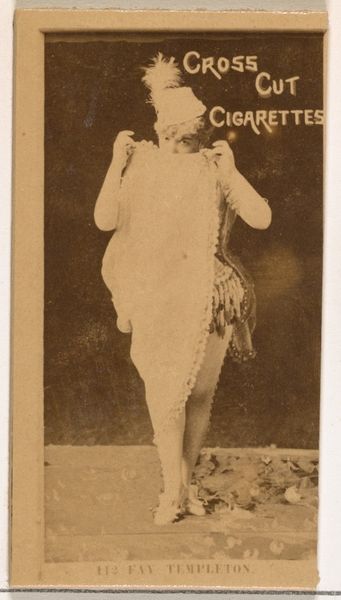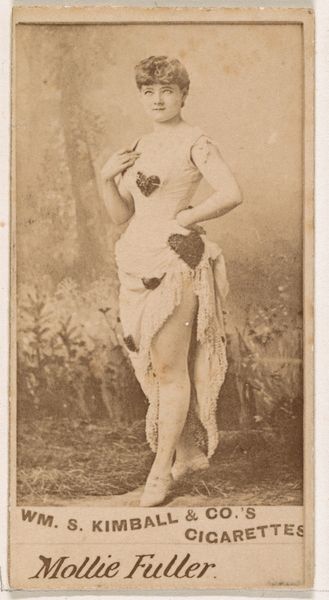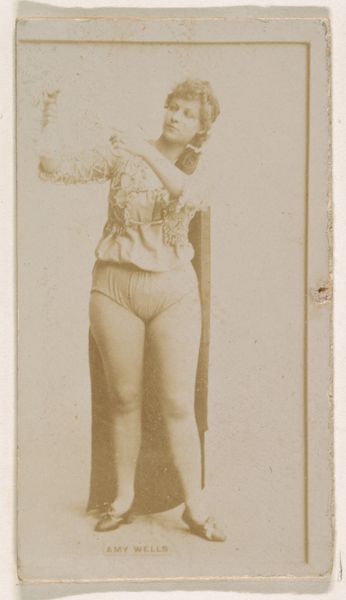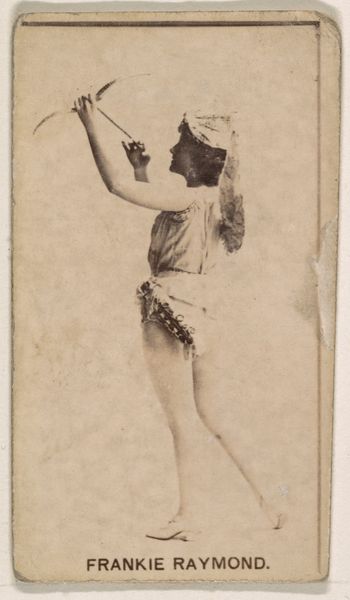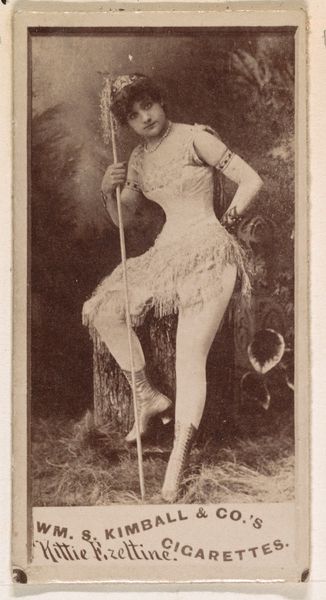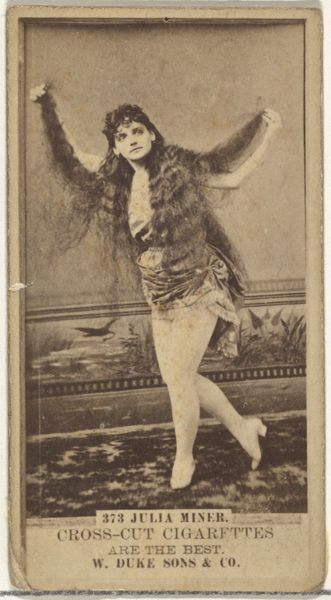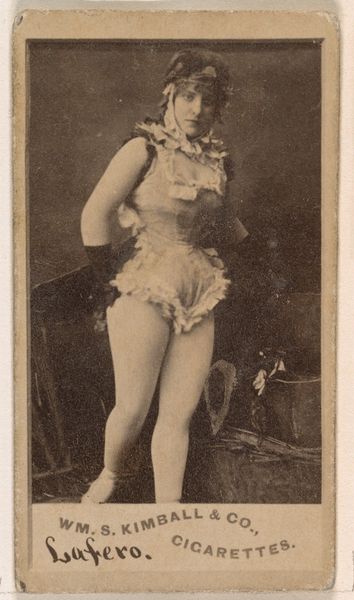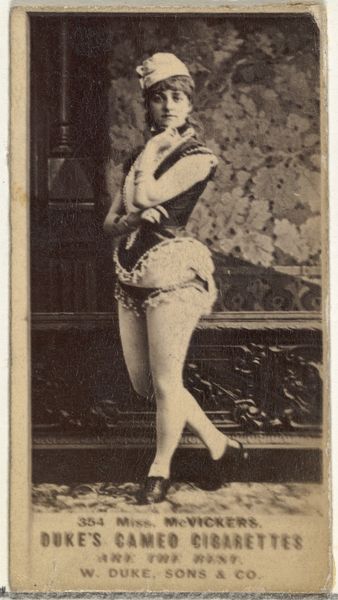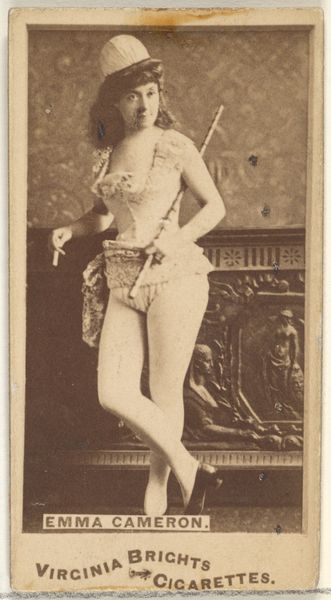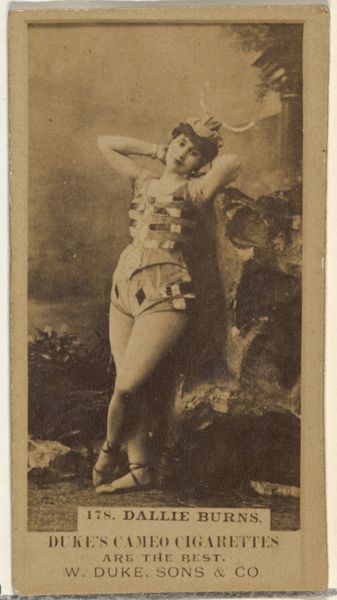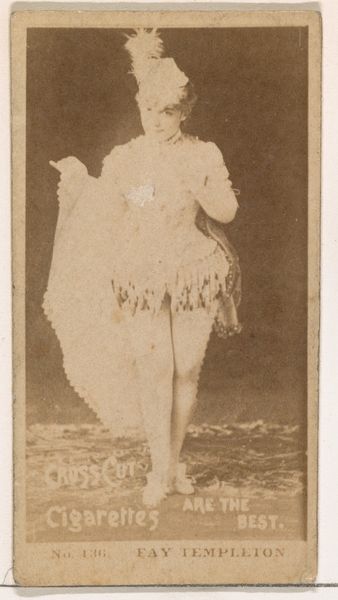
Kittie Wells, from the Actresses series (N245) issued by Kinney Brothers to promote Sweet Caporal Cigarettes 1890
0:00
0:00
print, c-print, photography
#
portrait
#
toned paper
# print
#
c-print
#
photography
#
erotic-art
Dimensions: Sheet: 2 1/2 × 1 7/16 in. (6.4 × 3.7 cm)
Copyright: Public Domain
Editor: So, this is a c-print from 1890 of Kittie Wells, an actress, and it was originally a promotional item for Sweet Caporal Cigarettes by Kinney Brothers. It's small, but her image feels so striking, almost defiant. What are your initial thoughts? Curator: Well, considering its original function, we have to think about this print as part of the broader industrial machine of the late 19th century. It’s not just a portrait; it’s a commodity, made using industrial photographic processes, distributed as part of a larger marketing strategy. What does the mass production of these images tell us? Editor: It's fascinating to think of it that way. How does understanding its origin as a cigarette promotion change how we view the image itself? Curator: It shifts the focus. We have to consider the labor involved, from the photographers and printers to the workers in the tobacco factories, predominantly women at that time. The image of Kittie Wells is being used to sell something. It prompts questions about the commercialization of image and gender. Who benefitted and how? What value do we, as consumers, place on such an image, divorced from its original setting? Editor: That’s a completely different way of seeing it. It goes beyond just looking at it as a portrait of an actress. Curator: Exactly! Think about the materials: the paper, the ink, and the photographic chemicals. These are products of specific industrial processes and point to global networks of trade and production. How sustainable was the production of the image? Was it fair to labor force at the time? It’s easy to focus on Wells, but a materialist approach requires broadening the scope to the full web of production. Editor: I hadn’t really considered all those layers before. It makes you realize how much we often overlook the physical aspects and implications of art. Curator: Absolutely! Hopefully this new perspective shifts your analysis from individual to networks of material practices, transforming your understanding of visual art.
Comments
No comments
Be the first to comment and join the conversation on the ultimate creative platform.
